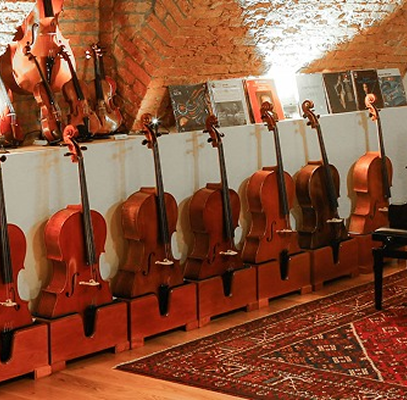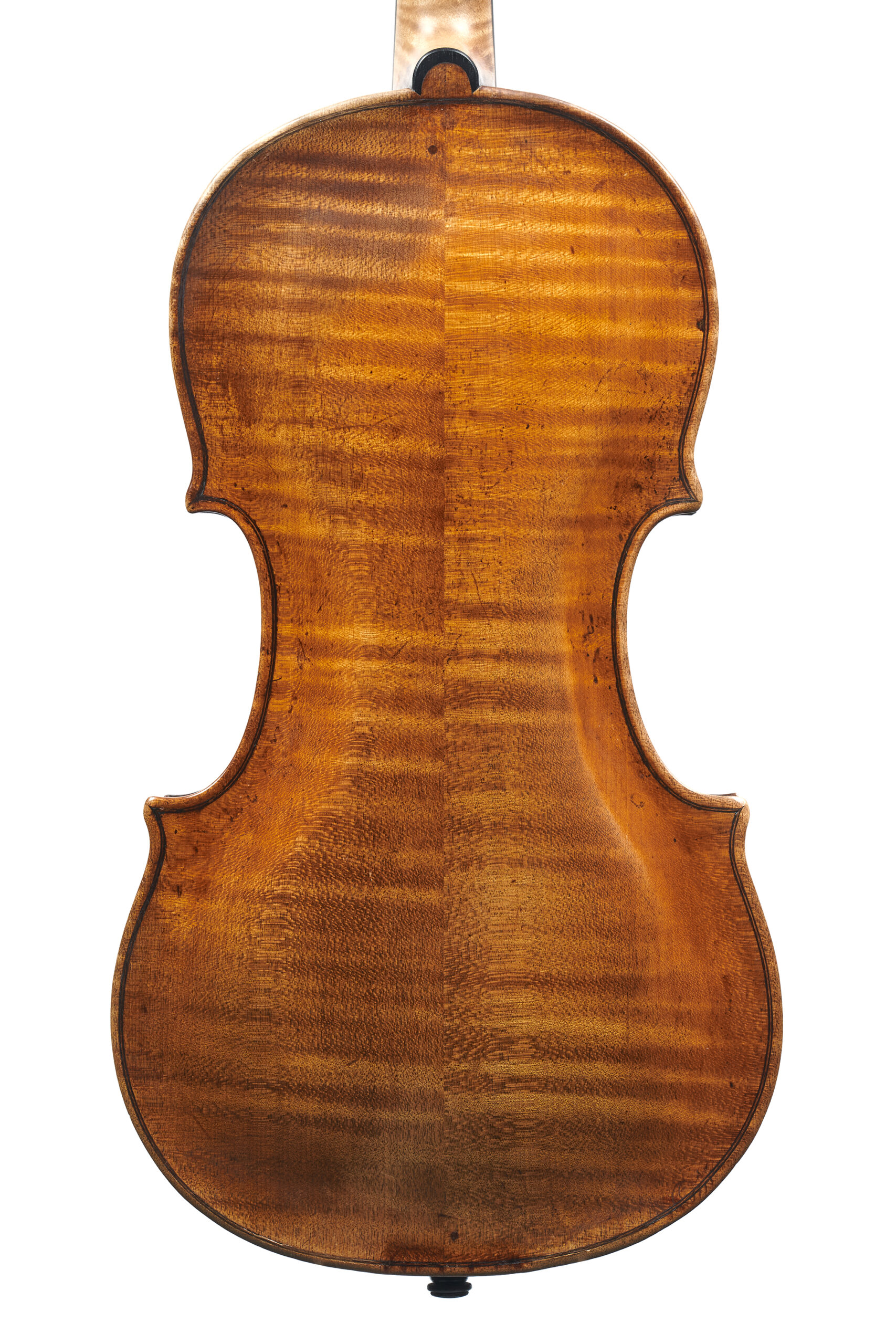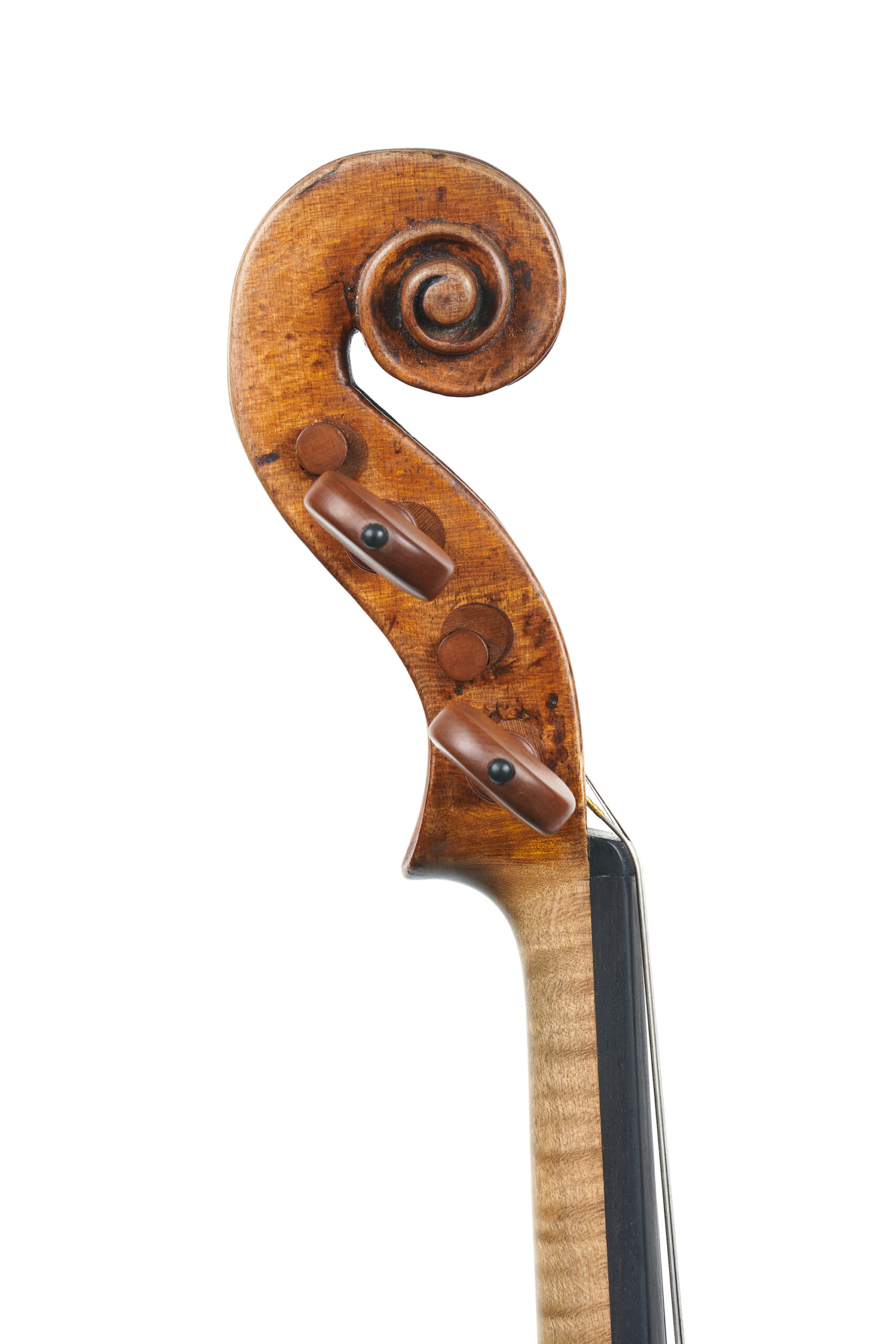Full description
This rare violin by Angelo da Rub, crafted in Viterbo around 1760, is a striking representation of the Roman school’s distinct character and its subtle Germanic influences. Featuring a Stainer-inspired model and high, prominent arching with a characteristic central ridge, the instrument embodies da Rub’s deeply personal yet historically rooted approach to violin making.
The varnish—a warm, light amber laid over a golden ground—glows with understated elegance and speaks to the quiet confidence of the maker’s hand. The top is made of Italian spruce with a medium-wide grain and robust structure, a material choice often found in da Rub’s surviving works. The two-piece maple back displays a beautiful, consistent flame, echoed in the ribs and scroll, all cut from matching wood.
Most captivating is the scroll itself: precisely conceived, yet boldly and spontaneously carved. It captures the essence of da Rub’s style—an expressive tension between control and instinct that gives the instrument its unmistakable charm.
This violin, though rare, stands as a compelling voice from the 18th-century Roman tradition: rich in individuality, refined in craftsmanship, and historically significant as part of the city’s final generation of classical luthiers.
dimensions
sound characteristics
This violin offers a bright, sweet, and direct sound—clear in articulation and rich in overtones. Its immediacy under the bow makes it highly responsive, with a singing quality that projects effortlessly while maintaining warmth and charm.
Audio

00:00/
Angelo da Rub
Angelo da Rub, also known as Augusto da Rub, was active in Viterbo between 1760 and 1775 and is regarded as a distinctive representative of the Roman school of violin making. Strongly influenced by both Jakobus Stainer and the Amati tradition, his work is highly original—marked by bold arching, expressive F-holes, and thick purfling. Though little is known about his life, da Rub’s instruments are easily identifiable and reflect the stylistic richness of Roman lutherie in the 18th century.
Learn moreViolin Bow by Emil Max Penzel, Erlbach, c. 1930
By Emil Max Penzel |
A unique mastermaker crafted this Exceptional Pre-WorldWarII German bow. One of the most recognized makers of Germany's early 1900s, Emil Max Penzel, elegantly displays his references and his origins among the makers of the Pfretszchner workshop in this bow, yet preserves and flaunts his own style. In our opinion, the most noticeable aspect of this bow, beyond the excellent craftsmanship, is the stunning high-quality Pernambuco wood.
Get advice about this instrument
[INSTRUMENT NAME GOES]
Do you want to know more about this masterpiece? Contact us, and our experts can share their thoughts on this beautiful instrument. Let us help and advise you to find your dream instrument.







